Image of the Day Archives

For older Image of the Day pictures, please visit the Image of the Day archives. Pictured: NGC 2467.
Helix in the Sky Tonight
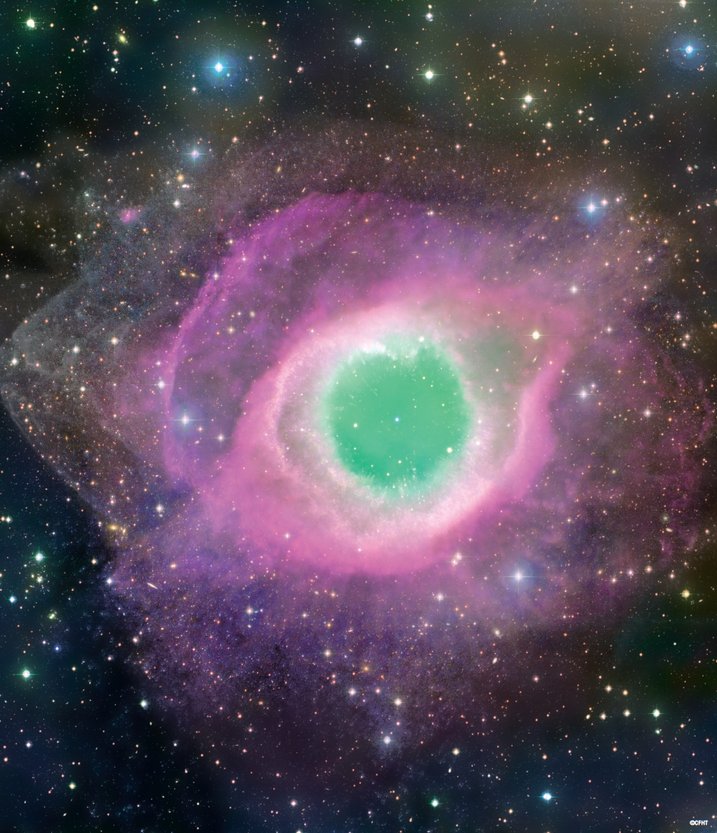
Wednesday, April 1, 2015: A sun-like star in the late white-dwarf stage of its life blows out a huge gas bubble that glows with colors stemming from the ultraviolet light of the star. Ionized hydrogen glows red, and towards the center, doubly ionized oxygen appears green.
— Tom Chao
They Call Me the Hunter

Thursday, April 2, 2015: The antennas of the Atacama Large Millimeter/submillimeter Array (ALMA) sit on the Chajnantor Plateau in the Chilean Andes, below the constellation of Orion, the Hunter. The Orion Nebula (Messier 42) lies at the center of the image, with the red star Betelgeuse (Alpha Orionis) to the right. Image released March 30, 2015.
— Tom Chao
Pulsing Pulsing
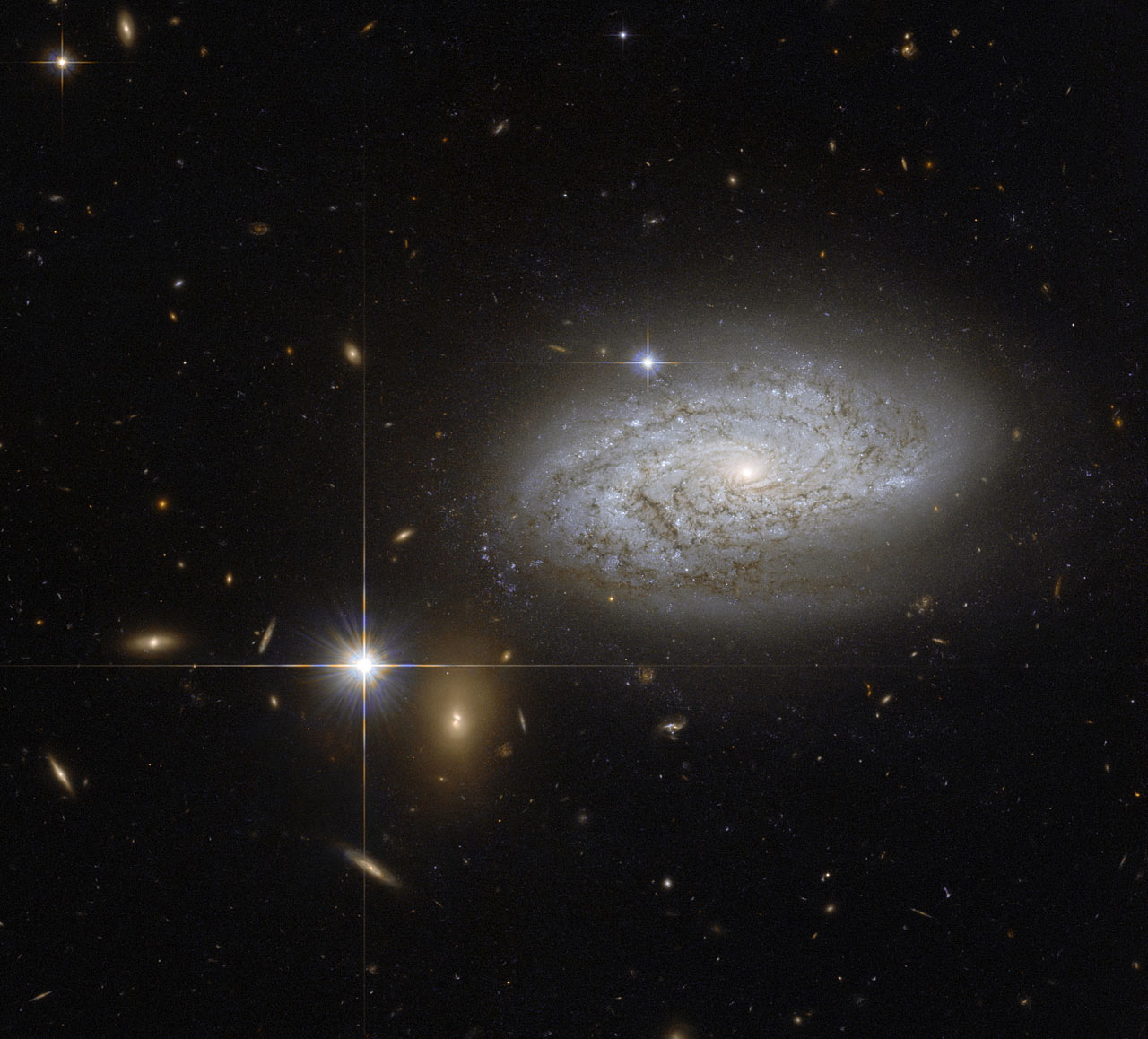
Friday, April 3, 2015: Spiral galaxy NGC 3021 lies about 100 million light-years away in the constellation of Leo Minor (The Little Lion), as seen in this Hubble Space Telescope image. The presence of Cepheid variable stars in this galaxy can be used to calculate the distance to the galaxy, as the variable stars’ pulsation correlate with their intrinsic brightness. Measurements of their pulsation rate and observed brightness.. Image released March 30, 2015.
— Tom Chao
I'm an Orange Moon
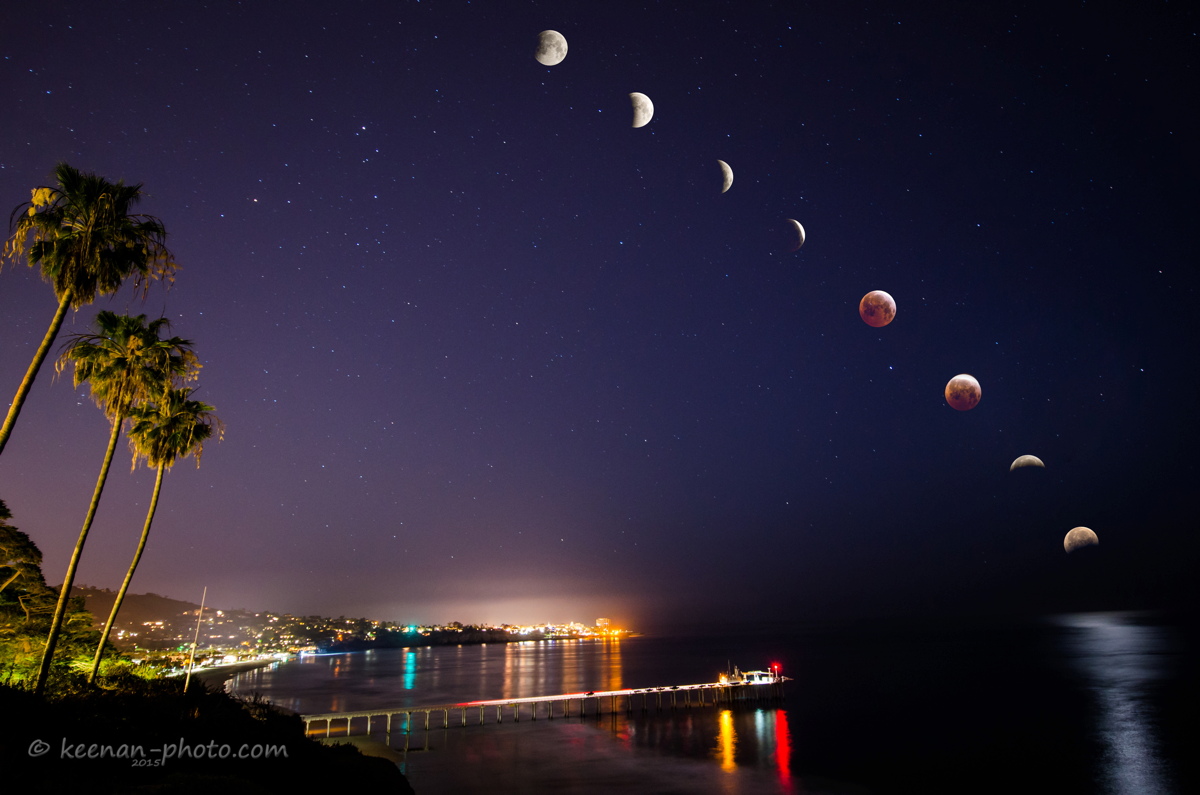
Monday, April 6, 2015: Astrophotographer Lucas Keenan caught several images of the lunar eclipse from the Scripps Institute of Oceanography overlooking La Jolla, California, as the moon was setting on April 4, 2015. The different images are combined in this composite photo. [Read the full story.]
— Tom Chao
Strange Light in the Evening
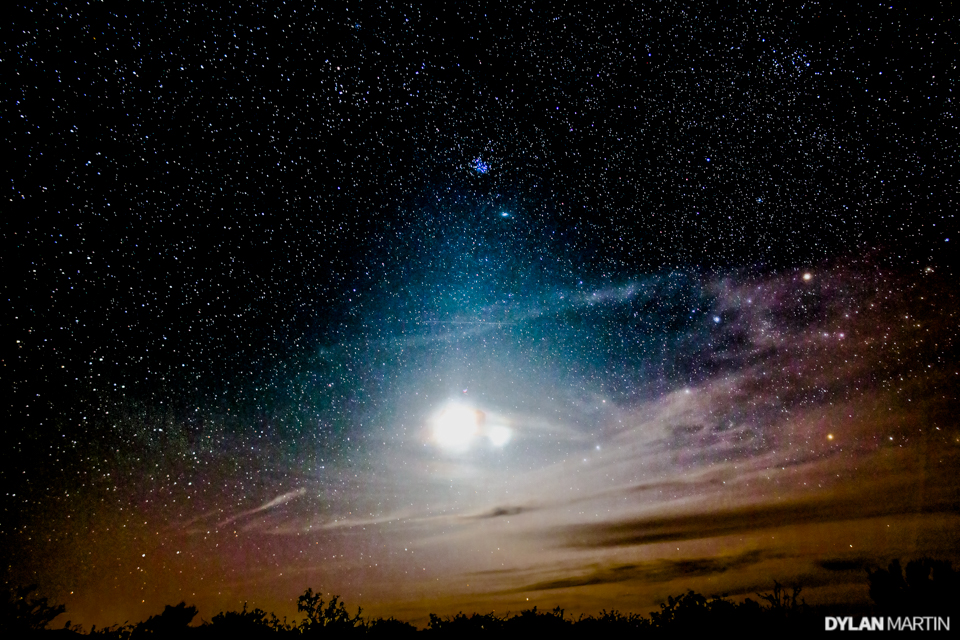
Tuesday, April 7, 2015: Astrophotographer Dylan Martin caught the zodiacal light near the base of Kitt Peak, Arizona, on March 22, 2015. The moon and Venus appear in the center of the image. Zodiacal light, the triangular shape at center, arises from sunlight reflecting from dust particles lying in the plane of the ecliptic, the sun's apparent path in the sky.
— Tom Chao
Stars Fell on Atacama
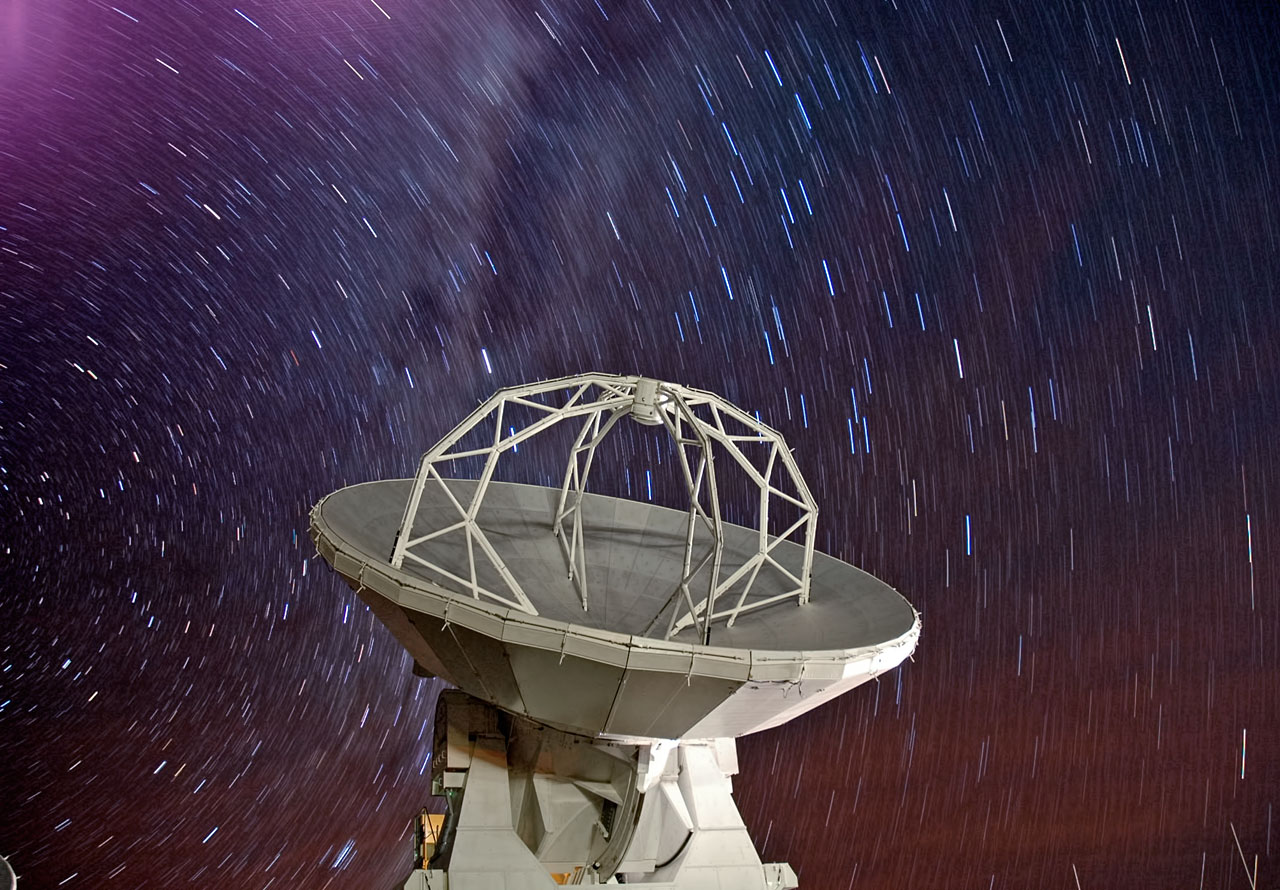
Wednesday, April 8, 2015: Stars appear to trail over one of the 66 antennas of the Atacama Large Millimeter/submillimeter Array (ALMA) on the Chajnantor Plateau in the Chilean Andes. This location possesses very little moisture in the air, a condition optimal for detecting radio waves passing through the atmosphere. A long exposure creates the trailing effect in the image, which was provided by courtesy of the National Astronomical Observatory of Japan (NAOJ). Image released April 6, 2015.
— Tom Chao
Breaking space news, the latest updates on rocket launches, skywatching events and more!
Packed!
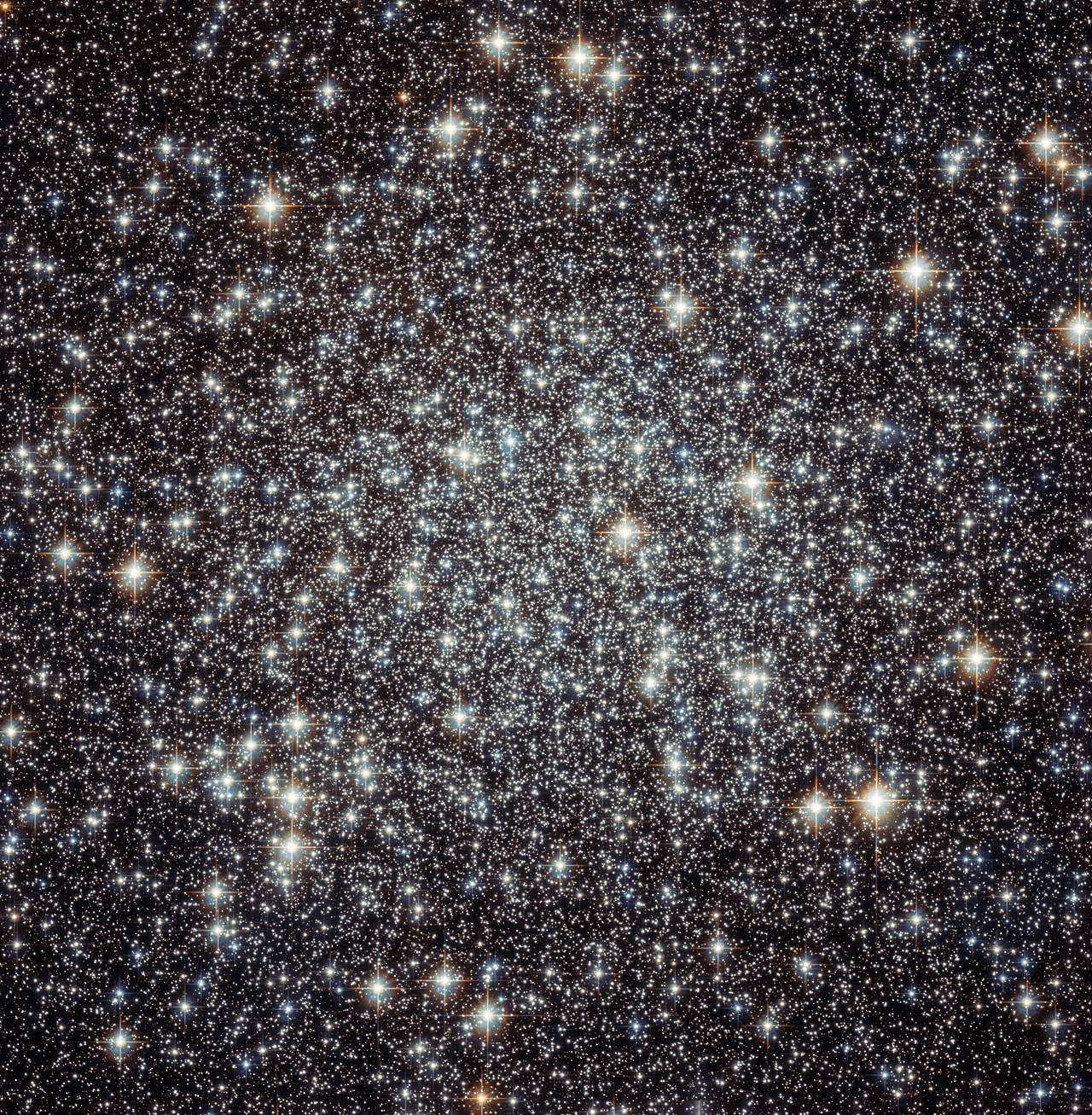
Thursday, April 9, 2015: Globular cluster Messier 22, also known as M22, lies 10,000 light-years away in the constellation of Sagittarius, making the cluster one of the closest to Earth. Globular clusters consist of densely packed stars in spherical collections, dating from early years of the universe, typically with ages of 12 to 13 billion years. Intriguingly, M22 contains six planet-sized objects not orbiting a star, two black holes and — unsually for a globlular cluster — a planetary nebula, a short-lived gaseous shell ejected by a massive star at the end of its life. Image released April 6, 2015.
— Tom Chao
Martian-ic Depression
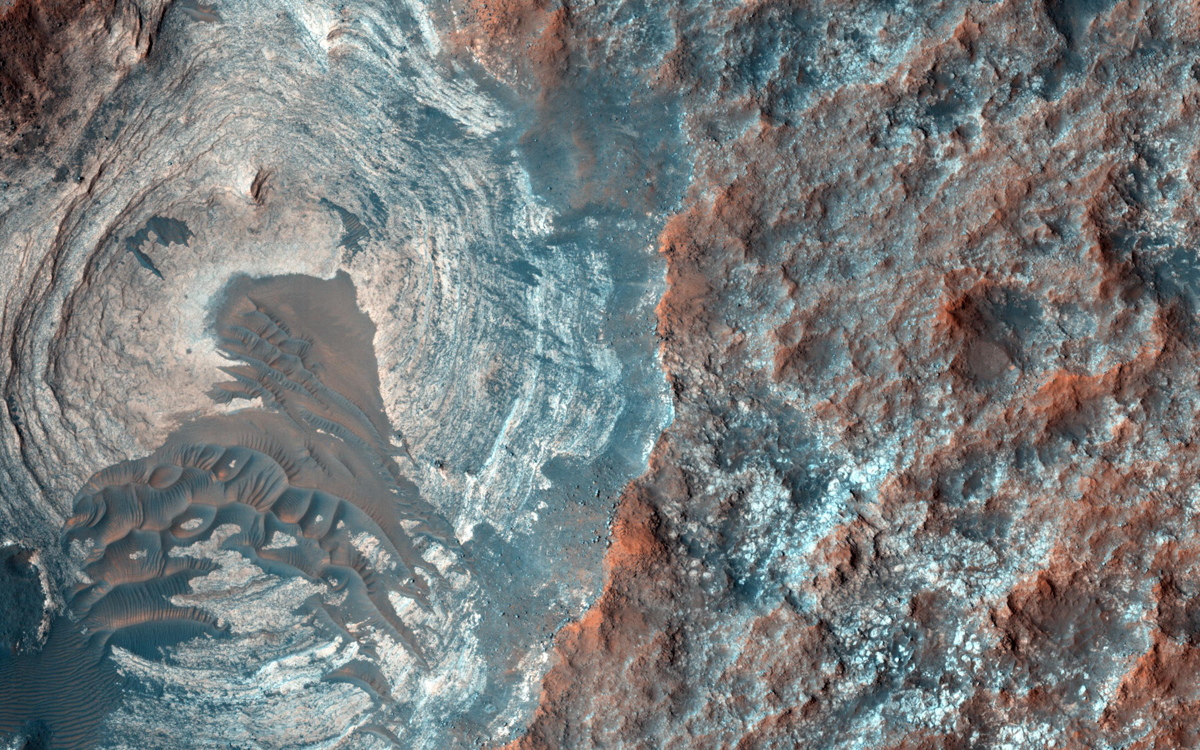
Friday, April 10, 2015: The HiRISE camera on Mars Reconnaissance Orbiter (MRO) spacecraft obtained this image of a circular depression in a dark-toned unit, associated with a field of cones to the northeast. A Context Camera image of the area shows apparent layers exposed by the depression, especially on its sides or walls, overlain by dark sands presumably associated with the dark-toned unit. The higher resolution of HiRISE camera can help identify possible layers.
— Tom Chao
Hole in the Sun
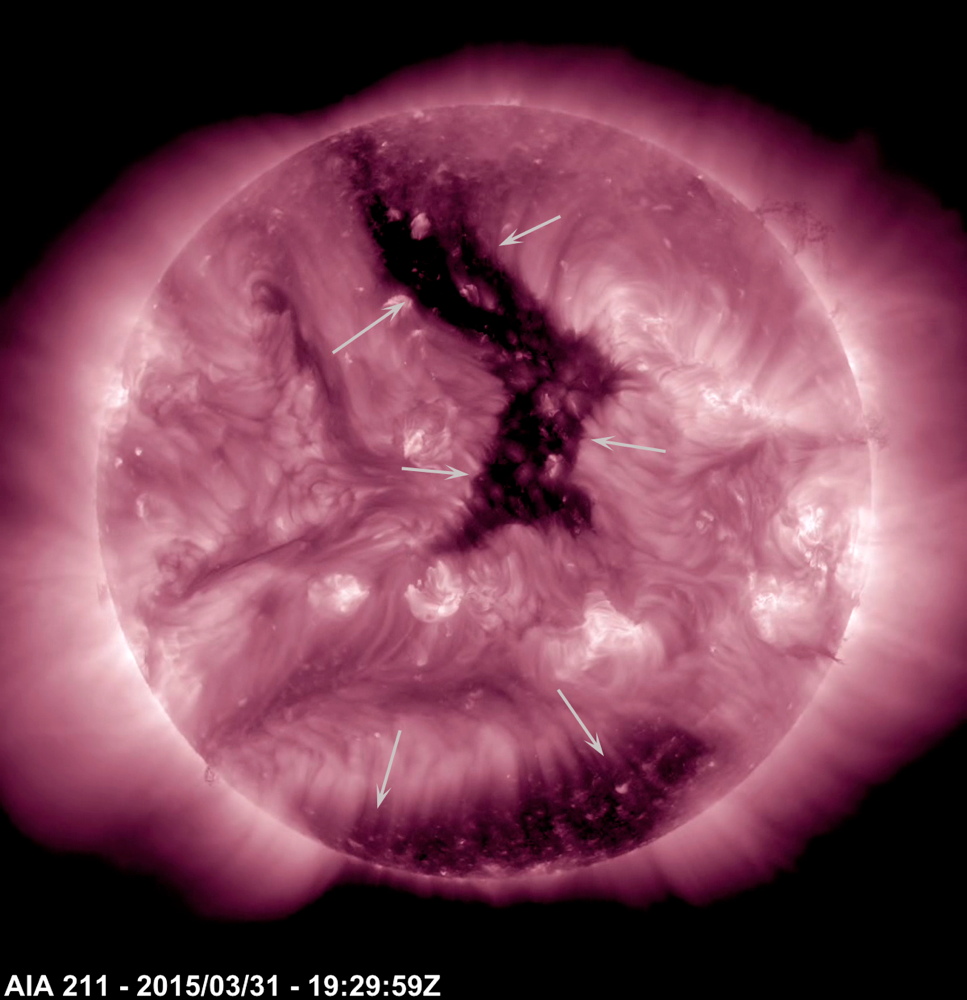
Monday, April 13, 2015: Two substantial coronal holes stood out notably on the sun (marked with arrows) during the week of March 28 – April 2, 2015. Coronal holes form when the sun’s magnetic field lines extend into space, allowing the solar wind to flow out. Solar Dynamics Observatory obtained this image in a wavelength of extreme ultraviolet light.
— Tom Chao
Halo
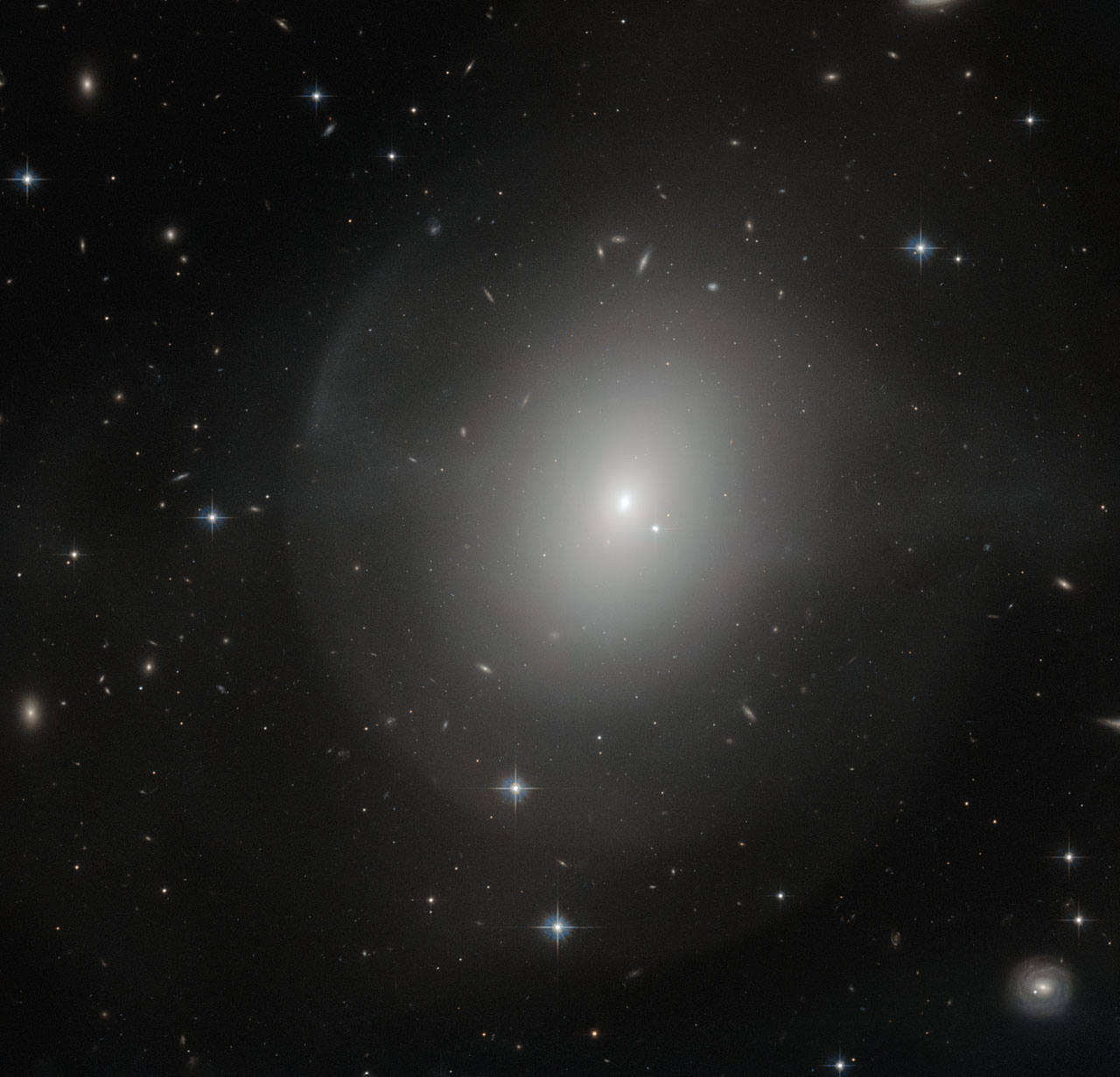
Tuesday, April 14, 2015: Elliptical galaxy NGC 2865 lies just over 100 million light-years away from Earth in the constellation of Hydra, the Sea Serpent. Old, dying stars usually fill elliptical galaxies. NGC 2865, however, is relatively youthful, containing a rapidly rotating disc filled with young stars and metal-rich gas. In fact, it holds an unusually high number of young stars, suggesting that a galaxy-wide starburst occurred about one billion years ago. The starburst stemmed from a merger between a spiral galaxy and much more massive elliptical galaxy, the progenitor galaxy of NGC 2865. The faint halo surrounding the galaxy also resulted from the merger, when cold gas tore away from the spiral galaxy.
— Tom Chao
Join our Space Forums to keep talking space on the latest missions, night sky and more! And if you have a news tip, correction or comment, let us know at: community@space.com.

